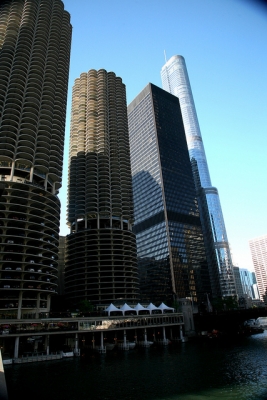Smart Buildings Are Looking Smart, Too - Creating Iconic Brands through Digital Signage

For over 100 years, architectural design and height have been two of the main features that distinguished iconic buildings, buildings familiar to everyone, landmarks where people wanted to work. Whether an old refurbished building in Detroit or the Burj Kalifa in Dubai, the physical aspect of smart buildings contributes greatly to its reputation, desirability and ultimately the income it produces.
Over the last 30-40 years, signage has become a more integral part of a building's visual impact. For example, consider smart buildings in Las Vegas, New York, Hong Kong or Tokyo. In many cases, the digital signage and the lighting have redefined the ’personality’ of the smart building.
In most cases, the brighter the lights, the closer to the city center you are located. This area remains a dynamic place where people want to be, where the best businesses are located and where the rents are the highest. Speaking of rents, some could argue that the revenues per square foot of digital signage have long surpassed the square footage of a building itself.
Recent years have brought a new generation of digital signage placed on the exterior facade. It is more elegant, classy, sophisticated and higher definition. The visual aspect is impressive and compelling. This new generation of signage is meant to grab your attention and capture your imagination, keeping your attention longer. It is not simply a screen bolted on a building with non-stop graphic chaos, but rather a very well thought out story that uses the building as its canvas.
Emerging companies now specialize in working with smart building committees to integrate high definition, engaging media productions into the very essence and design of the smart building.
The goal is to make the signage and the building one, and to create a personality for the smart building that is comprised of both the traditional tools of architecture and this new generation of digital technologies. Project owners have one single goal: they want their smart buildings noticed, distinguished and remembered. These iconic buildings in many cases are also defining the energy and scope of the entire skyline and city.
What are the some of most important issues to consider when it comes to a Media Façade or a ‘High Definition Building’?
1. Realize the importance of having a content strategy prior to designing or installing a media facade (i.e., know exactly what you're going to use it for).
2. Give due consideration to integration of the media facade technology into the smart building's facade (versus hanging a rectangular screen on the side of the building).
3. Be aware of the crucial need for knowledgeable local legal counsel to help lead the way through the minefield of code restrictions and entitlement issues.
4. Understand how media facades will impact adjacent properties.
5. Understand LED media facade maintenance issues.
Smart buildings today are competing for attention and tenants, and setting a building apart from the competition is more important than ever. No matter where it is--Detroit or New York City, a high definition media experience on the smart building’s exterior is sure to help build a brand and attract tenants.
